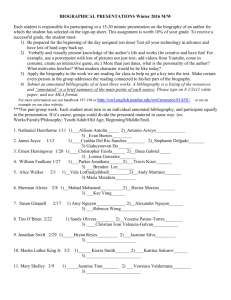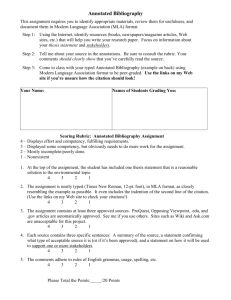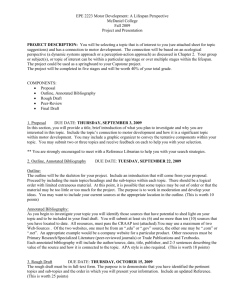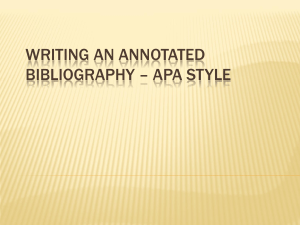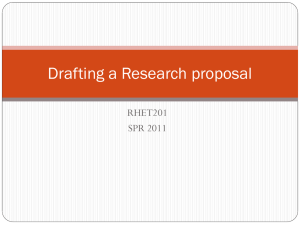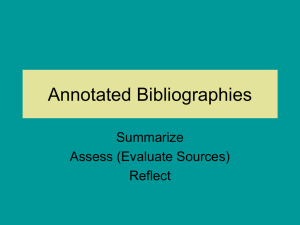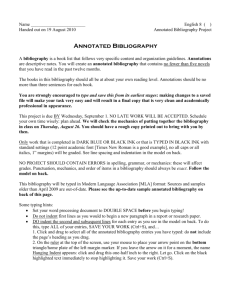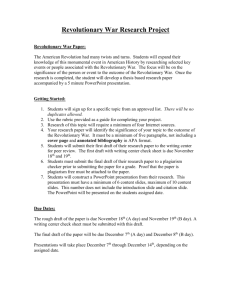Position Paper - Purdue University
advertisement
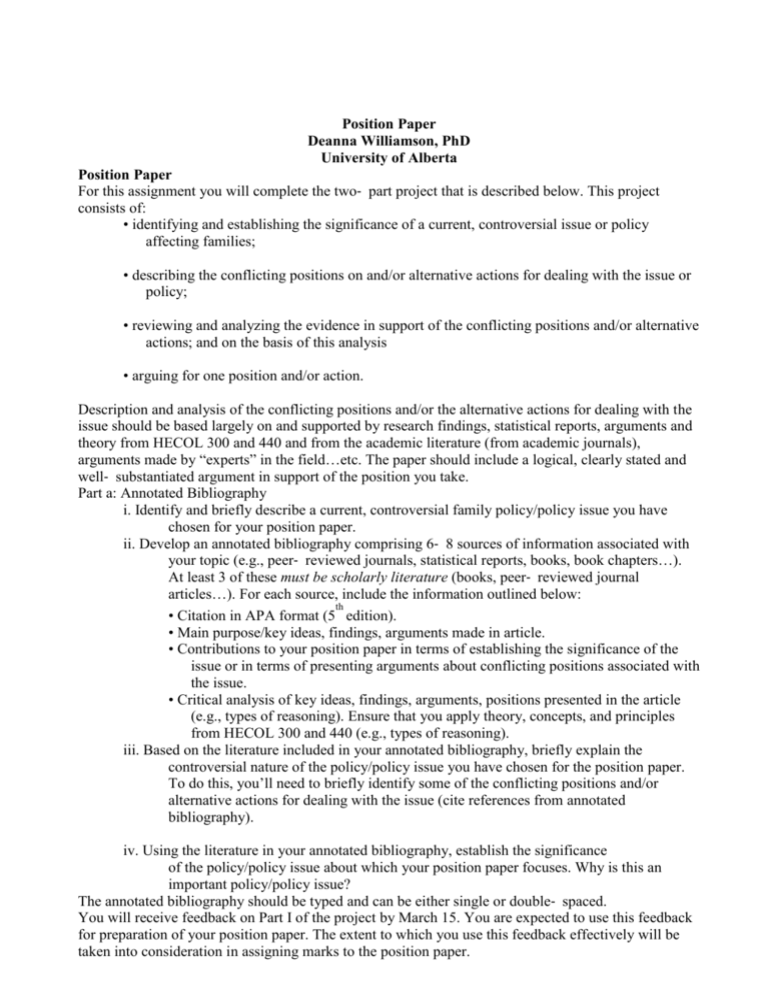
Position Paper Deanna Williamson, PhD University of Alberta Position Paper For this assignment you will complete the two‐ part project that is described below. This project consists of: • identifying and establishing the significance of a current, controversial issue or policy affecting families; • describing the conflicting positions on and/or alternative actions for dealing with the issue or policy; • reviewing and analyzing the evidence in support of the conflicting positions and/or alternative actions; and on the basis of this analysis • arguing for one position and/or action. Description and analysis of the conflicting positions and/or the alternative actions for dealing with the issue should be based largely on and supported by research findings, statistical reports, arguments and theory from HECOL 300 and 440 and from the academic literature (from academic journals), arguments made by “experts” in the field…etc. The paper should include a logical, clearly stated and well‐ substantiated argument in support of the position you take. Part a: Annotated Bibliography i. Identify and briefly describe a current, controversial family policy/policy issue you have chosen for your position paper. ii. Develop an annotated bibliography comprising 6‐ 8 sources of information associated with your topic (e.g., peer‐ reviewed journals, statistical reports, books, book chapters…). At least 3 of these must be scholarly literature (books, peer‐ reviewed journal articles…). For each source, include the information outlined below: th • Citation in APA format (5 edition). • Main purpose/key ideas, findings, arguments made in article. • Contributions to your position paper in terms of establishing the significance of the issue or in terms of presenting arguments about conflicting positions associated with the issue. • Critical analysis of key ideas, findings, arguments, positions presented in the article (e.g., types of reasoning). Ensure that you apply theory, concepts, and principles from HECOL 300 and 440 (e.g., types of reasoning). iii. Based on the literature included in your annotated bibliography, briefly explain the controversial nature of the policy/policy issue you have chosen for the position paper. To do this, you’ll need to briefly identify some of the conflicting positions and/or alternative actions for dealing with the issue (cite references from annotated bibliography). iv. Using the literature in your annotated bibliography, establish the significance of the policy/policy issue about which your position paper focuses. Why is this an important policy/policy issue? The annotated bibliography should be typed and can be either single or double‐ spaced. You will receive feedback on Part I of the project by March 15. You are expected to use this feedback for preparation of your position paper. The extent to which you use this feedback effectively will be taken into consideration in assigning marks to the position paper. Part b: Complete Position Paper Using the literature gathered for the annotated bibliography, Professor Williamson’s feedback, and at least 6 additional sources of information on the topic (at least 3 of which must be scholarly literature), you will write a 15‐ 20 typed double‐ spaced position paper. The typeface should not be smaller than th 10 point or larger than 12 point. Where references are cited, APA format (5 edition) is required. Evaluation of the position paper will be based on the criteria listed below. � � � and arguments made in the academic literature. Understanding of the topic will be evidenced by the appropriate application of concepts, principles, theories, and analytical skills learned in class and from required readings.

